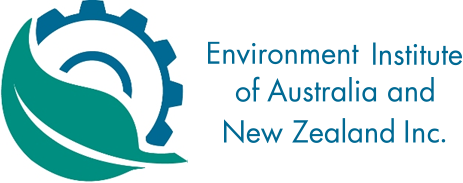-
Member Login
- Home
- About
- Institute Groups
- Membership
- Events
- News & Publications
- Institute Programs
- Resources
- Jobs Board
- Contact Us
- Site Info
Message from the President - March 2016
A few weeks ago I wrote to EIANZ members outlining some recent activities across the Institute. I touched on highlights from the last few months, and, I hope, gave members a sense that EIANZ has been active on their behalf. It was a good start to the year, but there is more to do.
So, what’s on the horizon, and what are the challenges?
1. Delivering more
We understand that members want EIANZ to:
- Increase the relevance of EIANZ and its work to practitioners
- Support more service delivery to members
- Provide a voice for EIANZ in National and State affairs.
We are getting on with this work. Your local Divisions and the NZ Chapter are planning quality professional development events throughout the year. I encourage you to engage with them, and benefit from both the insights and the professional networks you’ll gain through these activities.
Also keep an eye out for what’s happening elsewhere in EIANZ. Early career training in impact assessment is coming up in Far North Queensland (part of the STEPs program). The ACT Division will host a full day forum on the EPBC Act. In Victoria you’ll be able to explore climate action, and those in NSW can learn more about perfluorinated compounds at an upcoming forum. You can find out about these and other EIANZ events here.
I’ll be travelling to Canberra for the ACT Division’s forum on the EPBC Act on 8 March. I encourage all members to cast a wide net and take full advantage of the work of colleagues across Australia and New Zealand.
2. Speaking up
We are working to give EIANZ a stronger voice. Part of this involves being clear on EIANZ’s role and value proposition – the so-called elevator pitch. As a Board we see that as:
- Representing the profession – to Government, industry and the media
- Supporting our members – by providing professional development opportunities, mentoring and useful information
- Advancing professional practice – promoting our code of ethics and certification scheme
- Connecting practitioners – facilitating professional networking and online discussions
- Leading the profession – creating a community of environmental practitioners, inspire them, and give voice to their collective aspirations. Our annual conference, and 2015 Conference Declaration, demonstrate such leadership of the profession.
In coming weeks we’ll be meeting in Canberra with politicians of all major parties, raising awareness of EIANZ within the ranks of our national representatives. In New Zealand, colleagues are preparing a submission to the NZ Government on its review national environmental legislation.
3. Growing membership
There are at least 25,000 environmental practitioners in Australia and New Zealand. Our membership is about 2,000, and we have almost 600 Certified Environmental Practitioners (CEnvPs).
It’s clear that many colleagues are yet to commit to joining the leading professional body advocating for their interests and supporting their careers. If EIANZ is to be recognised as leading a key 21st century profession, we need more members of the profession to be members of EIANZ, and CEnvPs.
I ask for your help in sharing your enthusiasm for EIANZ and its work with your colleagues, and encouraging them to join you as a member of EIANZ.
We would love to hear any feedback you gather in your interactions with colleagues, especially ideas that can assist us to develop further and lift the value of our organisation for members. Send your thoughts and ideas to president@eianz.org.
We acknowledge and value the rights and interests of Indigenous Peoples in the protection and management of environmental values through their involvement in decisions and processes, and the application of traditional Indigenous knowledge.

